#Osmia lignaria
Text
Creature Awaits #165
Each week I plan to feature an amazing creature, admiring God's fantastic artistry. Hopefully it’ll brighten someone’s day to see something new and interesting if they haven’t seen it before. : )
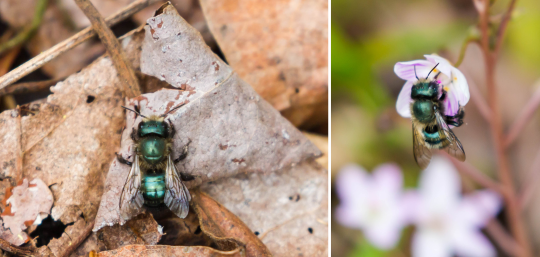
(Beautiful photography by Melissa McMasters (CC BY 2.0))
The Orchard Mason Bee
A.K.A: The Blue Orchard Bee (From photographs, it looks like their body is a metallic dark blue, but reflects a bright green in sunlight. : ) )
Scientific Name: Osmia lignaria
Region: North America
Size: Males are about 0.43" (~11mm) long, whereas females are about 0.55" (~14mm) long
Interesting Notes: As with other mason bees, their stinger is primarily for placing eggs. They're a shy species that will only sting if they sense great danger. Though they will build nests close to others and act friendly towards them, each family will take care of only their own brood, rather than having a queen/worker bee societal structure.
#creatureawaits#Orchard Mason Bee#Blue Orchard Mason Bee#Blue Orchard Bee#Osmia lignaria#beautiful bees#iridescent bees#metallic bees#pollinators#mason bees#solitary bees#North American bees#hide
1 note
·
View note
Text
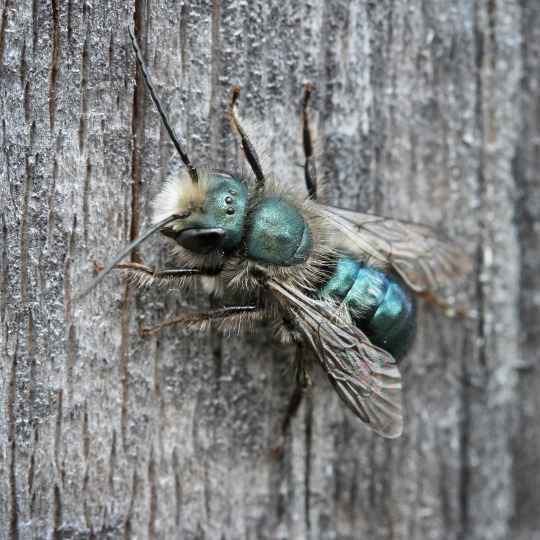
Blue Orchard Bee (Osmia lignaria)
April 5, 2024
John Heinz National Wildlife Refuge, Tinicum, Pennsylvania
#FINALLY found one of these#Not an uncommon bee#though there are only 18 records of it on iNat in Pennsylvania#bee#bees#photographers on tumblr#bugs#bug#bugblr#beeblr#entomology#insects#insect#nature#animals#wildlife photography#Mason bees
559 notes
·
View notes
Text
I have achieved MAXIMUM BOOP

I'd like to thank my mother and Keanu Reeves, who both had nothing to do with this accomplishment but are both seemingly lovely people, the left mouse button and the touch screen, and of course everyone who booped me adding to a total of 1,000 boops, particularly @everythingisincorrect for mutual booping, and I'd like to dedicate this victory to orchard mason bees, osmia lignaria, who I think are pretty neat.
3 notes
·
View notes
Text
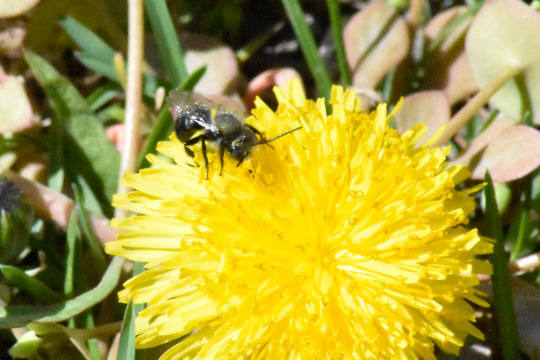

blue orchard bee (osmia lignaria) - april 2022
2 notes
·
View notes
Text
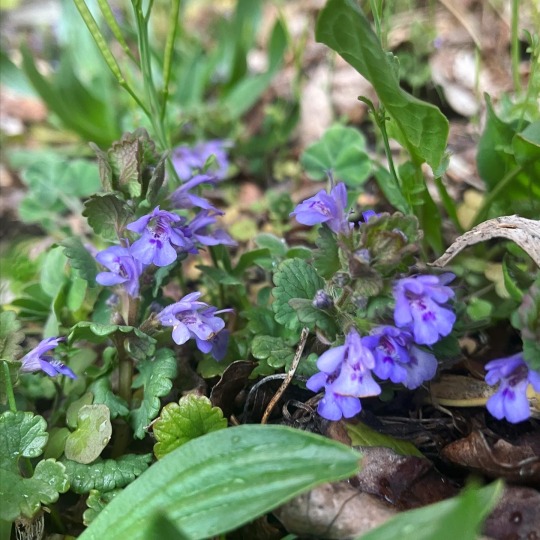
Glechoma hederacea
🌿Glechoma hederacea
Family: Lamiacea (Mint)
Common Names: Ground Ivy, Creeping Charlie, & gill-over-the-ground
Perennial herbaceous plant
Native to Europe, and introduced to North America as early as the 1800's. It is considered Invasive in the U.S as it forms dense patches that can push out native plants.
Pollinators include: Anthophora furcata (Fork-tailed flower bee) Anthidum manicatum (European wool carder bee)
Anthophora plumipes (Hairy-footed flower bee)
Anthophora quadrimaculata (Four-branded flower bee)
Anthophora abrupta (Minor bee)
Osmia aurulenta (Gold-fringed mason bee)
Osmia caerulescens (Blue mason bee)
Osmia lignaria (Blue orchard bee)
#botany#horticulture#botanical#flowers#purple flowers#wildflowers#springtime#invasive species#invasive plants#gardening#plants#the more you know#the more you learn#science rules#creeping charlie#kill your lawn#let them pollinate#flowers for the bees#save the bees#let the bees feed#perennial grasses
9 notes
·
View notes
Text
Scientists gain insight into a buzzing spring pollinator that plays a significant role in the almond industry
Read the full story from the Agricultural Research Service.
The USDA’s Agricultural Research Service (ARS), in collaboration with the Ecological Forestry Applications Research Centre in Spain and North Dakota State University, conducted a comparison of the physiological and molecular processes involved in the summer and winter dormancy of Osmia lignaria, also known as blue orchard bee or orchard…
View On WordPress
0 notes
Text
Types of Mason bees We are providing
Mason bee is a common name for bees in the genus Osmia, which belongs to the Megachilidae family. Mason bees get their name from the fact that they build their nests out of mud or other "masonry" products in naturally occurring gaps like fissures in rocks or other small dark spaces. When hollow stems or holes in wood caused by wood-boring insects are available, some species prefer to use them.
Mason Bees - Blue Orchard Bee:
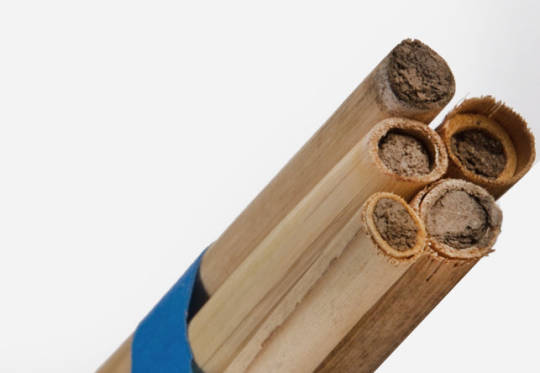
Osmia lignaria, often known as the orchard mason bee or blue orchard bee, is a megachilid bee that builds nests in reeds and natural holes, dividing its brood into distinct cells with mud dividers. It is unable to drill holes in wood, unlike carpenter bees. Though a number of different Osmia species are bred for use in pollination, O. lignaria is a common species utilized for early spring fruit bloom in Canada and the United States.
2. Leaf Cutter Mason Bees:

Megachilidae is a globally distributed family of primarily solitary bees with a pollen-carrying device (called a scopa) limited to the abdomen's ventral side (rather than mostly or exclusively on the hind legs as in other bee families). The most common names for Megachilid genera are mason bees and leafcutter bees, which refer to the materials used to construct their nest cells (soil or leaves, respectively); a few collect plants or animal hairs and fibers and are referred to as carder bees, while others use plant resins and are referred to as resin bees. All species eat on nectar and pollen, however, a few are kleptoparasites that feed on pollen collected by other megachilid bees (informally known as "cuckoo bees"). The scope is not found in parasitic organisms.
3. Osmia Texana Mason Bees:

The Texas Osmia, or Texas osmia, is a bee species belonging to the Megachilidae family. It can be found in both Central and North America.
4. Osmia California Bees:
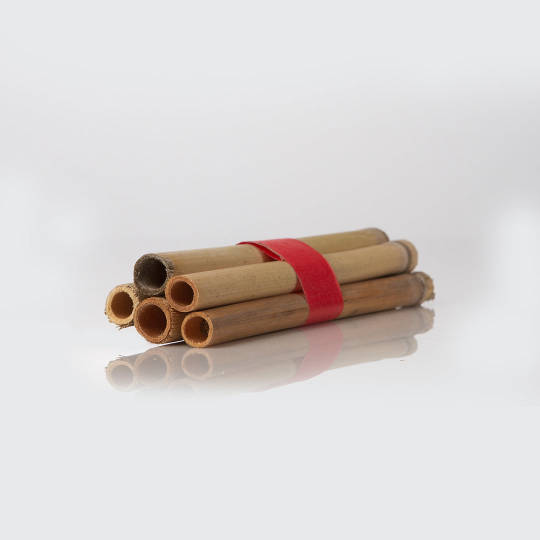
A megachilid bee, or mason bee, is Osmia californica. Mason bees are vital pollinators that are native to North America. The orchard mason bee, O. California, emerges a little later in the spring than the more well-known orchard mason bee (O. lignaria). O. California, like the orchard mason bee, is a solitary nester.
Masonbeesforsale.com is here to make your native bee buying experience one to remember. With mason bees, we want you to succeed. We care about you as an individual consumer, from engaging customer service to homegrown natural products, years of experience, and overall product quality.
Mason bee house for sale can be a great addition to your orchard or house, and they can help you meet your gardening demands. You can help the honey bee population by utilizing mason bees, leafcutter bees, and bee housing, and you can also increase your environmental food source by using mason bees, leafcutter bees, and bee housing. We provide a wide range of products at Masonbeesforsale.com, including bee houses, bee kits, nesting materials, and clay.
For more details Visit- https://masonbeesforsale.com/collections/bees
0 notes
Text
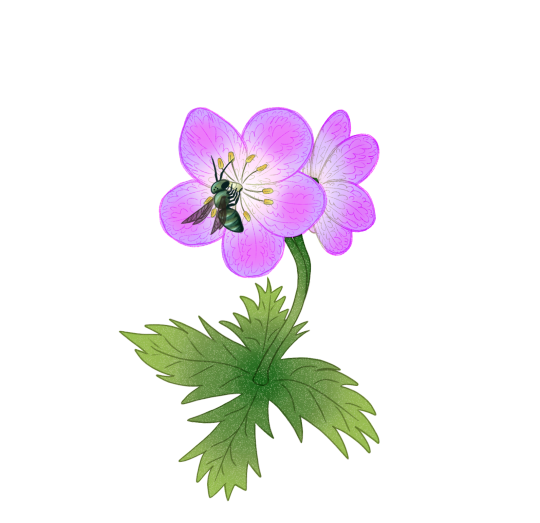

bees :)
[ID: Two digital drawings of bees with plants. Both are transparent images. Image 1: A blue orchard mason bee, Osmia lignaria, atop a wild geranium. There are two pink flowers emerging from the stem, and four leaves below them. Image 2: A common eastern bumblebee, Bombus impatiens, curled up under a brown autumn leaf. It's surrounded by a white border. End ID].
27 notes
·
View notes
Text

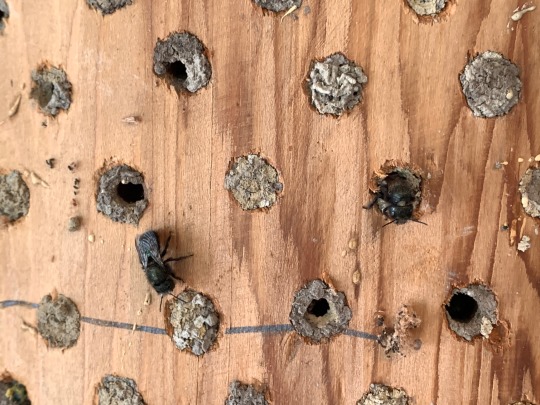
It was a cold morning so I was able to get a close up while they were relatively still.
https://www.fs.fed.us/wildflowers/pollinators/pollinator-of-the-month/mason_bees.shtml
28 notes
·
View notes
Photo
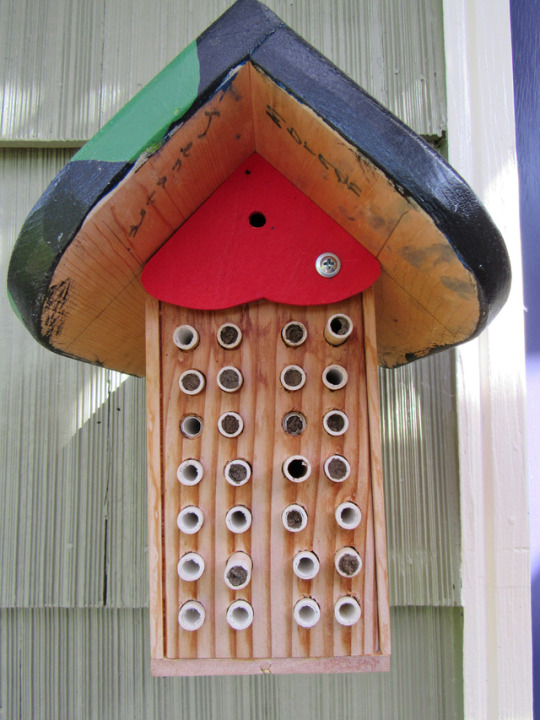


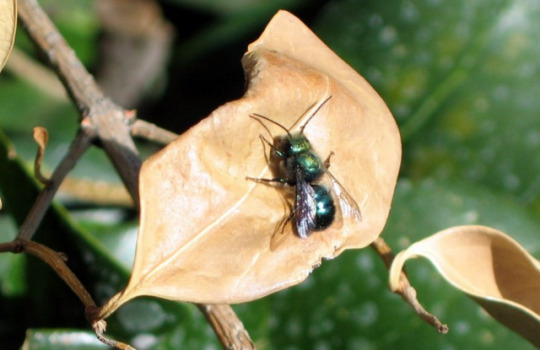
I love my little mason bees and I’m so relieved they’re doing better. Last year, only one tube was filled with eggs in my bee house. This year, 12 tubes are already filled. Maybe it’s because I added a lot of gloppy garden clay to their mud source on my deck and kept it nice and wet. Whatever the reason, it’s good news, right?
#Mine#Animals#Permaculture#mason bees photoset#raise mason bees#great pollinators#pollinate fruit trees#pollinators#native bees#blue orchard mason bee#osmia lignaria#mason bee tip#bee love#i love bees#i love native bees
53 notes
·
View notes
Link
youtube
I read this article and watched this video in class and I thought it was super interesting, so I thought you all would appreciate it as well
#hymenoptera#blue orchard bee#osmia lignaria#save the bees#insect#bug#bugblr#entomology#conservation#arthropod#college junk
26 notes
·
View notes
Text
blue bees!
[start video transcript
Tubbo: Yellow is my favorite color. No, no, no. What is my favorite color? Hm, maybe it is yellow, you know?
Ranboo: (overlapping tubbo) Blue?
Wilbur: Bees are yellow, Tubbo.
Tubbo: Bees are yellow! It would be very very-
Wilbur: Strange if they weren't. *small chuckle*
Tubbo: I mean, honestly, blue bees!
end video transcript]
what if i told you there are blue bees?
orchid bee (Euglossini)
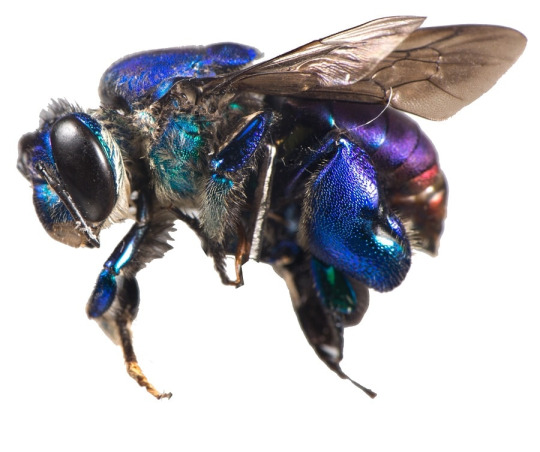
blue orchard bee (Osmia lignaria)

calinthma bee (Osmia calaminthae)

and these are only a few that i knew off the top of my head!! with over 20,000 species of bees, there are so many that differ from the usual yellow and black honey or bumble bee! isn't that cool? :D
#mcc#mcc15#wilbur#tubbo#bees#i just really love bees#especially solitary bees!#and i want the world to know that there are so many cool bees that help pollinate the world that aren't honeybees#just because they don't give us a product like honey that we can mass produce and capitalize off of doesn't mean they aren't important#also first actual post let's goooo#i don't think i'll make very many actual posts but this is a nice first one c:
60 notes
·
View notes
Note
Best kind of bee. Go
Osmia Lignaria aka blue orchard bees are really neat. They're blue (hence the name) and are great pollinators for fruit trees. They're great bees for the area they live in (mostly the us and Canada) because they cocoon themselves during the winter and do a sort of hibernation (not the right term but you get what I mean) while other bees have to leave for warmer climates during that time.

#thanks for the ask latte!#love to talk about these little dudes#asks#latte-lizard#bees#bee types#bee facts
9 notes
·
View notes
Note
apples and also bees

Pollination is a crucial part of growing quality apples. Apples require cross-pollination -- bees moving pollen from a pollen-donating tree to the receiving tree. Pollen-donating trees must be a compatible cultivar that has been intercropped (e.g., planted in alternate rows) or crabapple trees that have been interspersed within the apple orchard for this purpose.
Typically, honey bees visit flowers in the morning. Orchard management practices such as pesticide applications or mowing that disrupt their morning activity may significantly impact the success of pollination. Apples that do not receive adequate pollination can become malformed as they develop, or will result in early fruit drop. Apple ovaries are typically divided into five chambers, each containing two ovules available for pollination. A fully pollinated apple will contain 10 seeds; however, a minimum of 6 to 7 seeds per apple will succeed in good fruit development.
The average blossoming period for apples when pollination can take place is about 9 days. Cool weather during bloom will extend this period, whereas warmer weather will shorten it.
Honey bees (Apis mellifera), although not native to North America, are the most important and most commonly used managed pollinator of apples.
Other less commonly used managed bees for apple pollination are bumble bees and mason bees. Colonies of bumble bees can be purchased from commercial rearing facilities and must be ordered months in advance of when they are needed.
Mason bees are solitary bees that will nest in large aggregations in nesting materials built out of cardboard or paper straws, cut pieces of bamboo, or blocks of wood with pre-drilled holes of a particular diameter. There are typically limited supplies of commercially reared populations of both native and non-native mason bees used for orchard pollination. The most common native species managed for orchard pollination is called the Blue Orchard mason bee (Osmia lignaria), and the most common non-native species is called the Horn-faced bee (Osmia cornifrons).
Growers can gradually build up their own native populations of mason bees by putting out nesting materials each season and following standard recommendations for keeping the bees cool for overwintering and then bringing them out of cold storage in time to be active for apple bloom.
Aside from managed bees, wild bumble bees and a variety of solitary soil- or stem-nesting bees can be found visiting and pollinating apples blossoms. Many of these bees nest directly in orchards or in adjacent habitat and are usually limited by the amount of non-crop flowering habitat that is adjacent to the orchard and the pest management practices used in nearby orchards. To build up populations of wild bees, growers are encouraged to provide non-crop flowering plants in adjacent habitats to the orchard – preferably in areas that will not receive pesticide applications or major drift from pesticides used in the orchard.
Johnny is a monster fucker
Pesticides, and in particular insecticides, can be harmful to pollinators. Most pesticide labels advise against their use during crop bloom for this reason. If an insecticide must be used during bloom, be sure to follow label directions and apply the pesticide when bees are least active, and so that the pesticide will dry before bees come into contact with flowers that have been exposed to it. For example, an application made at dusk or during the night will do the least harm to pollinators who visit flowers during the day. After the crop has finished blooming, be aware that pesticide drift onto non-crop flowering plants in adjacent habitat can harm pollinators on those flowers.
#Taking this opportunity I want to say that you tumblr user totoyatata is one of my most favourite mutuals on tungrl dot com#question fuckery let's go
16 notes
·
View notes
